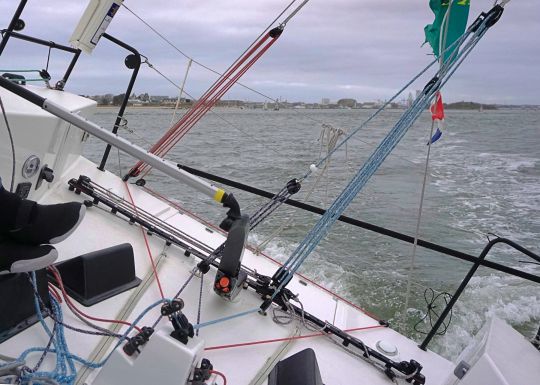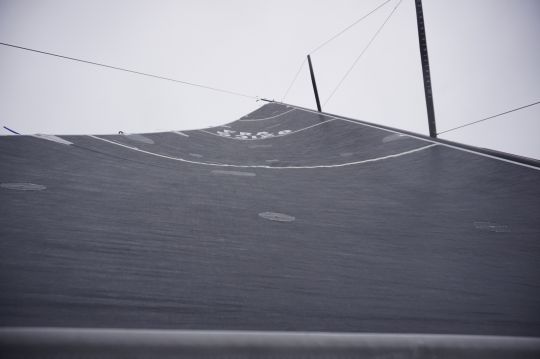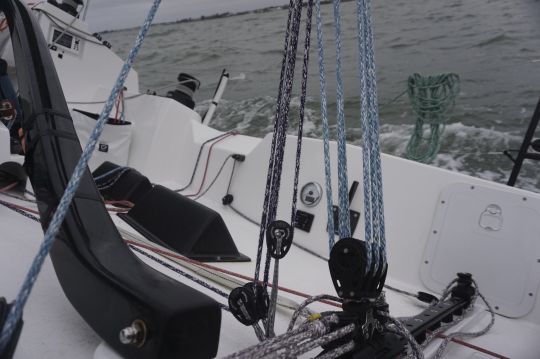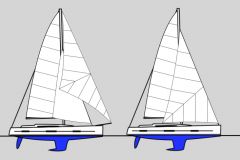Remember that the sheet is used to adjust the twist of the sail and the carriage adjusts the incidence of the sail. This adjustment allows precise control of the mainsail: you can optimise power, control heel and pressure in the helm.
How do I set up chariot??
Upwind, in order to find a basis for trimming, the general procedure is to use the mainsheet for rough trimming and then fine-tune by positioning the traveller.
Here is what a typical upwind mainsail trim sequence might look like:
1. In light wind, first adjust the mainsail kink using the sheet. For semi-lattened mainsails, tuck in the sheeting so that the top batten is more or less parallel to the boom.
2. Adjust this setting so that the highest pennant is at the limit of the stall.
3. Using the GV trolley, put the boom in the centre of the boat. This "boom in the middle" position will serve as a basic reference.
In light wind, to put the boom in line, the trolley will be mounted very upwind. Indeed, to obtain a laminar flow of the mainsail (visible with the penons), the sheet is very shocked.

When the wind gets stronger
As the wind picks up, the mainsail is tucked in to keep a laminar flow at the top of the mainsail (visible with the penons), and the carriage is let down in the centre.
When the boat begins to heel too much and the helm becomes hard to handle, the incidence of the sail will have to be reduced and the mainsail carriage lowered again. The trolley and boom will be below the centreline as much as necessary to control heeling.

And if the wind is strong...
Once you get to a certain wind strength, you're in overdrive. The carriage is lowered to the rail stop and the sheet is so shocked that the mainsail is flagged. While keeping the sheet very shocked, you can pull the carriage up until the bottom of the mainsail stops faseying. The mainsail will offer little incidence and the twist will allow a very large part of the overpower to be evacuated. However, it is high time to think about taking a reef.
In summary, an average sail trim for the sailing conditions must be found and fine-tuned with the trolley to prevent the boat from heeling excessively.

Fine and precise adjustment
In the range of sail trimmers, the carriage is the ideal tool to regulate power between reefs and soft. For head-rigged yachts (the most traditional) and with overlapping genoa, the carriage can be adjusted with a good amplitude, rarely touching the mainsheet. On boats with fractional rigging and small headsails, mainsheeting will be used more frequently.
This adjustment is particularly practical when cruising, as it allows you to balance the heel and control the pressure in the helm, which also makes life easier for the pilot automatique?!

 /
/ 









